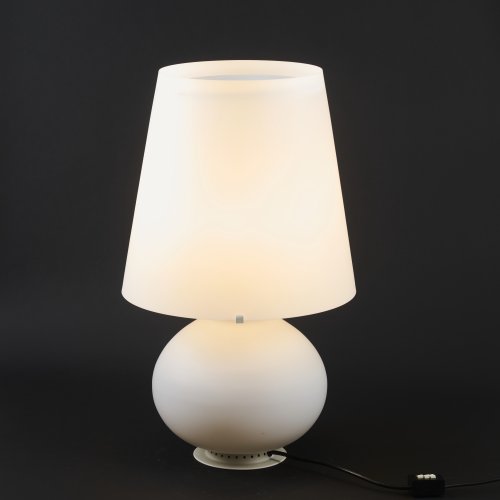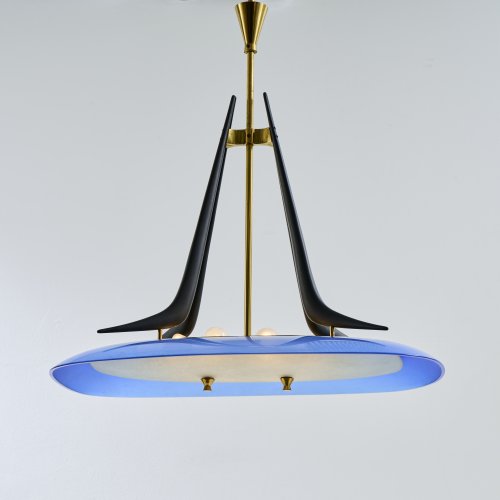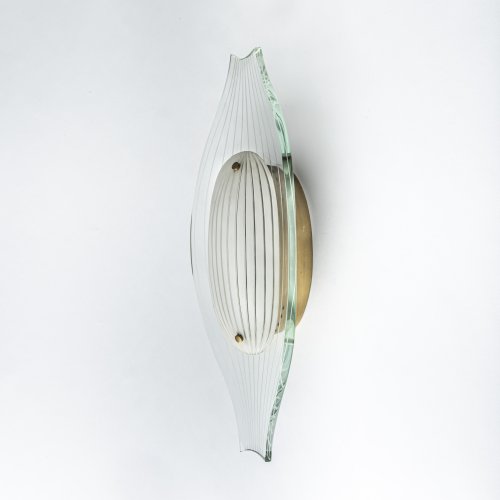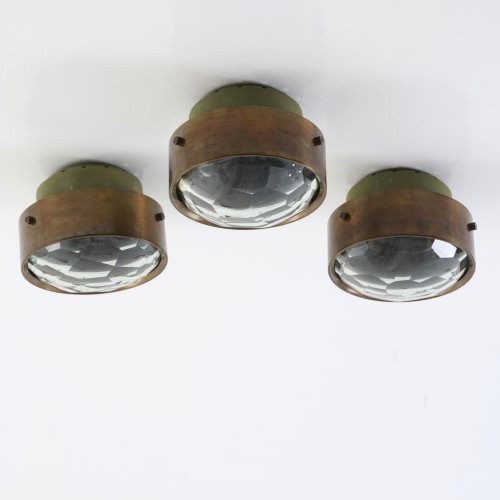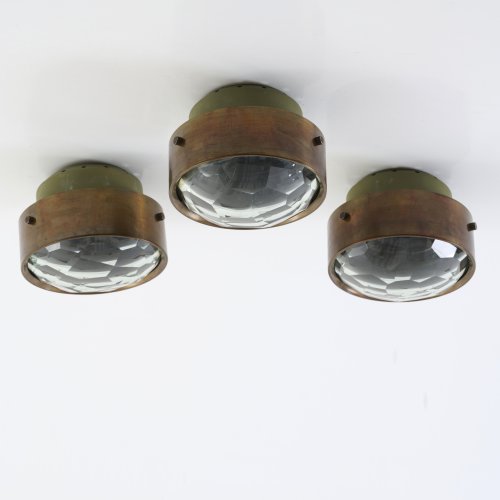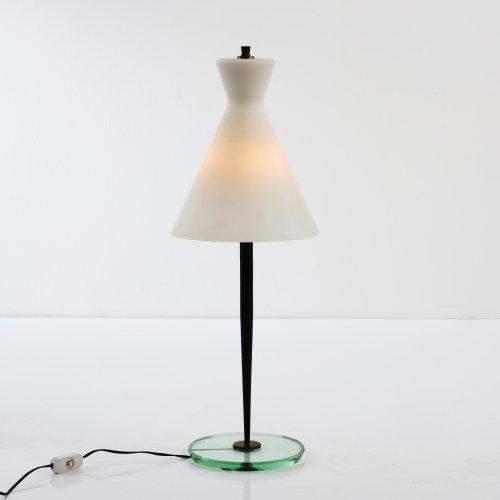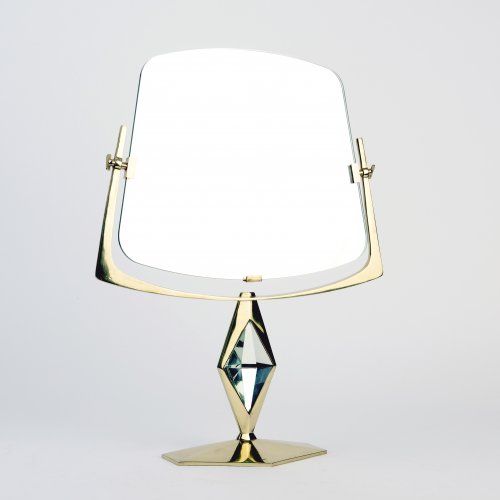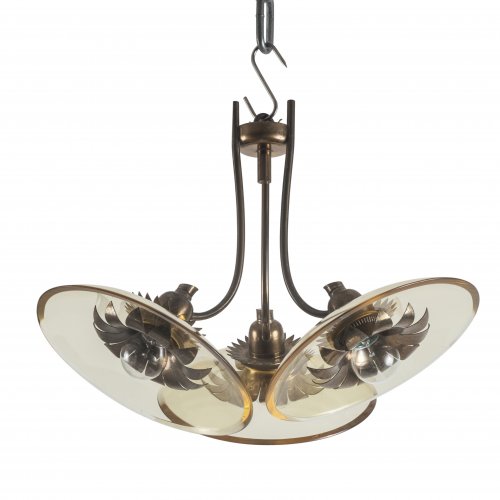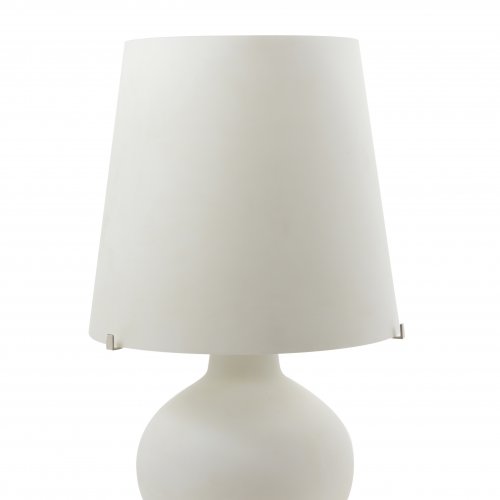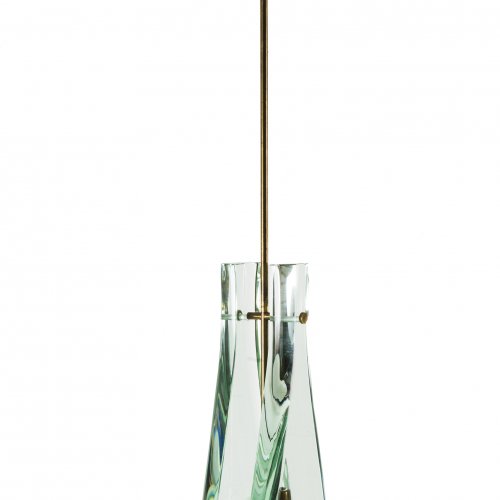Biography
Max Ingrand, born in 1908 in Bressuire, France was one of the greatest glass artists of the 20th century. In addition to lighting, mirrors, furniture, glass paintings and artistic glass panels with figurative engravings and paintings for prestigious interiors of villas, palaces and passenger ships such as the famous 'Normandie', he created magnificent glass windows in an innovative, partly expressionist formal language for numerous churches in France, including Sainte-Agnès de Maison-Alfort and Notre Dame in Paris.
Even as a child, he was fascinated by the stained glass windows of the Gothic cathedral in Chartres, where he lived for a time with his family. After studying at the Ecole nationale supérieure des arts décoratifs de Paris, he first worked as a glass painter in the workshop of Jacques Gruber, one of the co-founders of the Ecole de Nancy and famous for his leaded glass windows. There, Ingrand experimented with glass-working techniques such as etching and sandblasting to achieve new surface effects.
In 1931, Ingrand married the artist and glass painter Paulette Rouquié, with whom he worked from then on under the artist's name Paule et Max Ingrand. In the 1930s, the two exhibited several highly acclaimed projects at the Salons des artistes décorateurs. At the same time, Ingrand founded his first company 'Studium' in 1931 with the glass painters Emile Schwartz and Paul Demane, then a second company in 1932, whose workshop was located at Passage Tenaille 8, not far from the Montparnasse cemetery, where Max Ingrand worked until his death in 1969.
Glass, like concrete and metal, was one of the materials of the modern formal language of Art Deco in architecture and interior design. Ingrand's clients included the most renowned interior designers and architects such as André Arbus, Jules Leleu, Jean Royère and others. Ingrand and his wife produced large-format glass paintings with sandblasted and silvered pictorial compositions for private clients in Bucharest, Tokyo, New Jersey, Buenos Aires and Bombay. His subjects included mythological scenes, but also abstract forms.
His career was interrupted by the Second World War, during which he was a prisoner in Hoyerswerda. Afterwards, large commissions for churches, institutions and private clients followed again. For France's oldest industrial glass company, Saint-Gobain, he worked as artistic director from 1950. In 1954, Gio Ponti was able to win Max Ingrand as artistic director for his company Fontana Arte, founded in 1932, a position he held until 1967. One of the most famous lamp designs is the table lamp '1853' made of white sandblasted glass, which is still produced today.
Read more ...Read less ...
Objects by Max Ingrand
